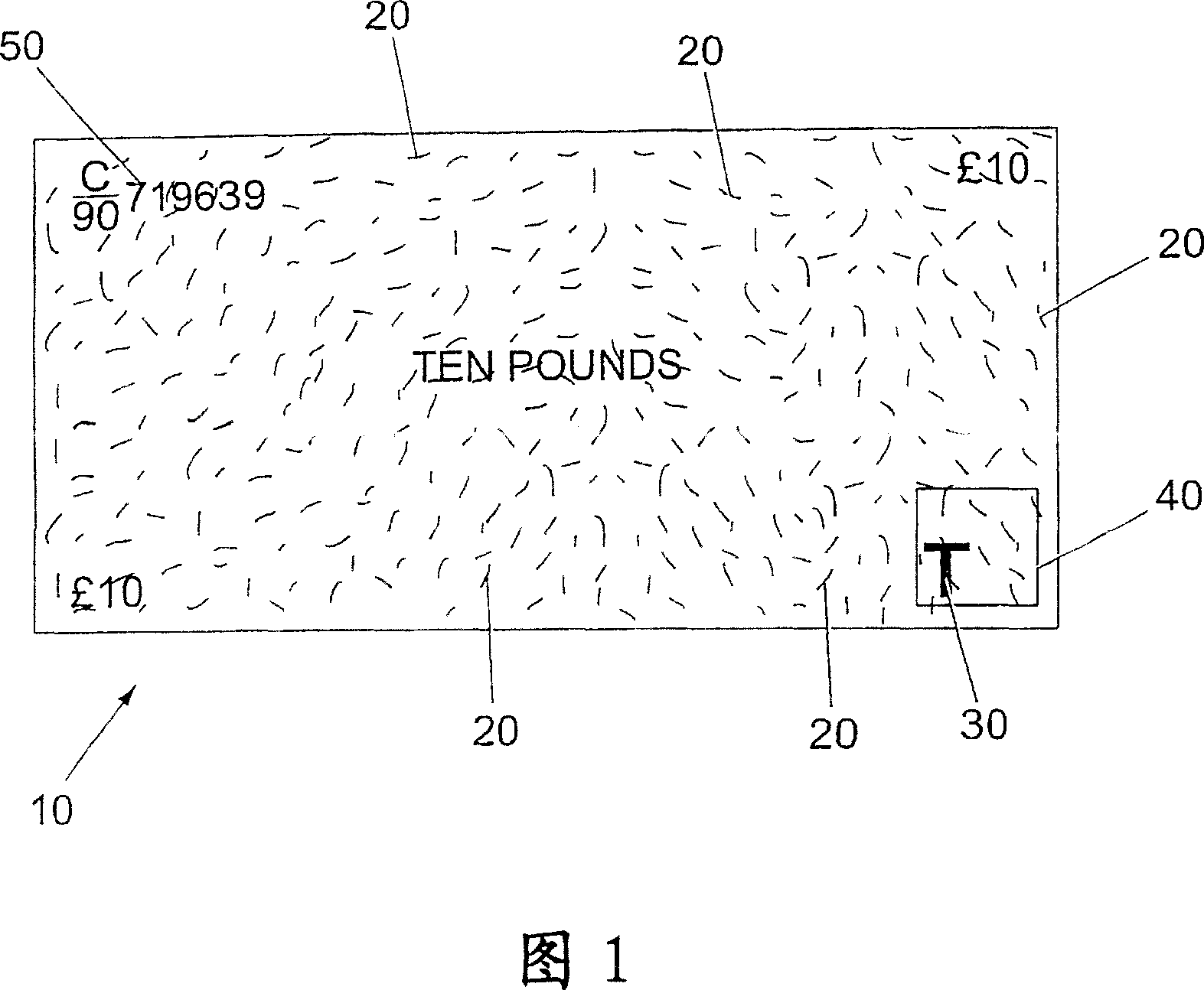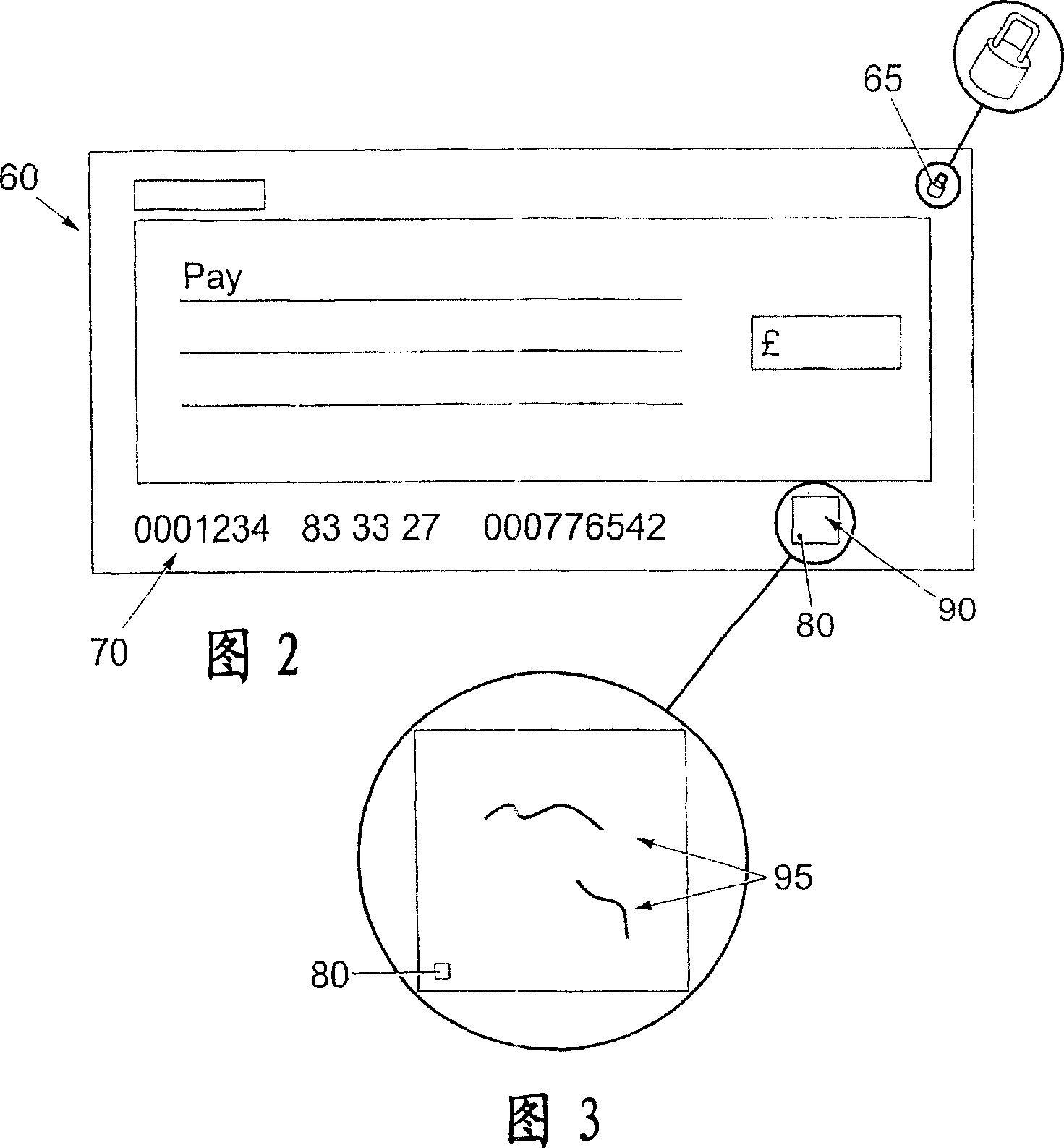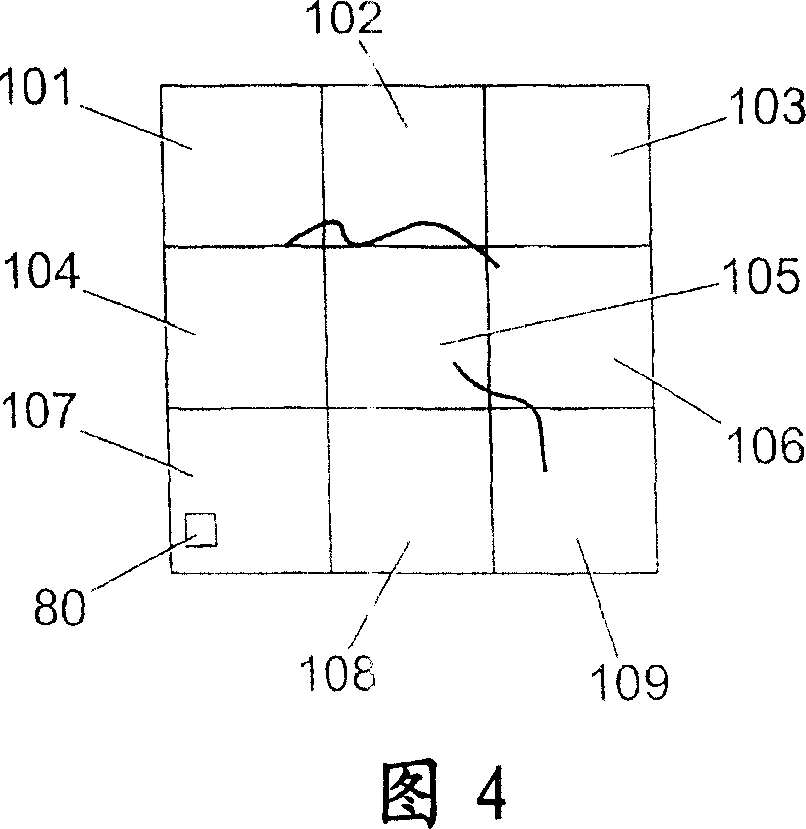Apparatus and method for identifying an object having randomly distributed identification elements
A technology for identifying components and identifying objects, which is applied to computer parts, character and pattern recognition, and record carriers used by machines, etc. It can solve problems such as theft and undetectable systems
- Summary
- Abstract
- Description
- Claims
- Application Information
AI Technical Summary
Problems solved by technology
Method used
Image
Examples
Embodiment Construction
[0053] In a first embodiment of the invention, in an article in the form of a banknote 10 as shown in FIG. 1 . An identification element in the form of viscose 20 (trade name: Rayon) is embedded in this banknote. The viscose fiber 20 has been dyed with a fluorescent dye, so it emits visible light when subjected to external ultraviolet (UV, ultraviolet) radiation (hereinafter, the viscose fiber 20 is referred to as UV fiber). The fluorescent dye makes the UV fibers 20 visible against the cellulose background of the paper.
[0054] The directions of the UV fibers in the banknote 20 are randomly arranged.
[0055] It should be noted that the UV fibers 20 are not necessarily visible to the naked eye, they are shown in Figure 1 for illustrative purposes only. The UV fibers in this figure are not drawn to scale. The preferred UV fiber size is about 4-8 mm in length (6 mm is the best), but the UV fiber can have a larger selection range in length and diameter.
[0056] All printed...
PUM
 Login to View More
Login to View More Abstract
Description
Claims
Application Information
 Login to View More
Login to View More - R&D
- Intellectual Property
- Life Sciences
- Materials
- Tech Scout
- Unparalleled Data Quality
- Higher Quality Content
- 60% Fewer Hallucinations
Browse by: Latest US Patents, China's latest patents, Technical Efficacy Thesaurus, Application Domain, Technology Topic, Popular Technical Reports.
© 2025 PatSnap. All rights reserved.Legal|Privacy policy|Modern Slavery Act Transparency Statement|Sitemap|About US| Contact US: help@patsnap.com



